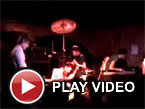Robert Piotrowicz, "Afterlife"
 Having dabbled in other styles and methods of instrumentation in recent years, Afterlife finds Polish composer Robert Piotrowicz returning to modular synthesis, the mainstay of his career thus far. Rather than using that complex array of modules and patch cables to generate bizarre, idiosyncratic sound effects, as many do, he instead intentionally utilizes it to emulate traditional, physical instrumentation, with the pipe organ being the most utilized. Combined with harmonic structures that the physical instrument would be unable to replicate, the result is familiar, yet alien, and is a wonderful demonstration of the psychoacoustic properties of electronic sound.
Having dabbled in other styles and methods of instrumentation in recent years, Afterlife finds Polish composer Robert Piotrowicz returning to modular synthesis, the mainstay of his career thus far. Rather than using that complex array of modules and patch cables to generate bizarre, idiosyncratic sound effects, as many do, he instead intentionally utilizes it to emulate traditional, physical instrumentation, with the pipe organ being the most utilized. Combined with harmonic structures that the physical instrument would be unable to replicate, the result is familiar, yet alien, and is a wonderful demonstration of the psychoacoustic properties of electronic sound.
"Rozpylenie (Overdusting)" leads off the disc with a massive church organ like swell of sound, although there is a hint of modular squeal to be heard peppered throughout. Overall, though, the layers of massive shifting, enveloping sound are almost overwhelming at times, sounding both like it could have been captured in a medieval church as much as a state of the art recording studio. The forceful dynamic he utilizes throughout makes the abrupt conclusion all the more jarring.
"Noumen" does not clearly have the organ-like properties as noticeable in the introduction, but there is a massive blast of physical sound right up front. It resembles almost everything from pipe organs to brass instruments to car horns blurtinig and blasting all at once. The end product is not far removed of some of Hermann Nitsch's compositions, which tend to be scored less for tones and more about (intense) dynamics. As the composition develops, Piotrowicz manipulates the electronics into sounding like trumpets and accordions (again, a great emulation of the physical instrumentation with just a slight offset). This is especially a memorable work given his playing with dynamics throughout.
The lengthy final piece, "Afterlife," sees him going back to low register organ sounds, again heavily focused on constructing dramatic layers upon layers of ghostly tones. However, things are different here, as he eventually reigns the sound back into more restrained spaces, focusing on tones rather than blasts. He briefly adds a layer of distortion and grime to the synth layers before pulling them away, ending the disc on a gentle, spectral note.
Robert Piotrowicz's goal of modeling the virtual (electronic) into the physical instrumentation of sounds is clearly achieved throughout Afterlife. Conjuring spaces and instruments that are not truly there, the sound of wind generated via oscillators and frequencies is impressive enough. When coupled with his unconventional approach to harmonic structures, there is an added, distinctly alien quality throughout. It is captivating, no question, but also a bit unsettling due to the sonic uncanny valley type approach to instrumentation, that comes close to faithful replication, while intentionally being something else entirely.



